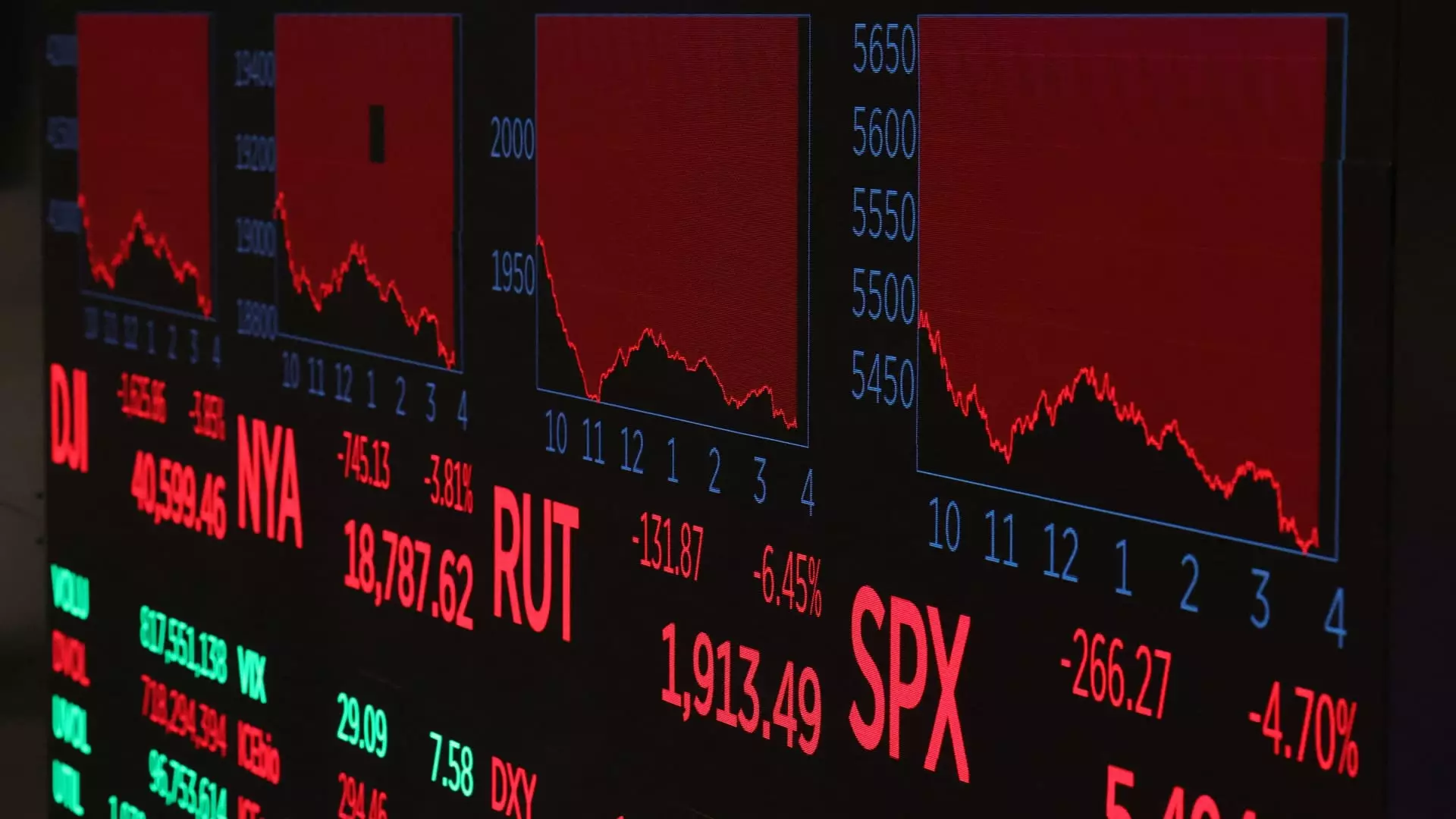The 8 Surprising Reasons Why Retail Investors Are Thriving in a Tumultuous Market

In an environment where Wall Street is frequently rattled by political maneuvering, it’s intriguing to observe the broader impact on retail investors. A recent episode involving President Trump’s altered tariff strategy illustrates this phenomenon, where the perception of uncertainty loomed large over financial markets. While institutional investors seemed alarmed, everyday traders showed remarkable resilience, treating the rocky market conditions as an opportunity rather than a setback. This begs the question: what drives this unwavering confidence among retail investors even as headlines scream caution?
Rachel Hazit, a 32-year-old marketer from Philadelphia, exemplifies this mindset. Having entered the world of investment just a year ago, she interpreted the recent market decline as a golden opportunity, noting that it felt like a ‘sale’ at the stock market. This reframing of the narrative would be baffling to many seasoned financial analysts who are merely concerned about macroeconomic indicators. Yet, for individuals like Hazit, this sense of empowerment is a radical departure from the passive consumer role often assigned to the average person.
Executing the ‘Buy the Dip’ Strategy
Retail investors have been quick to embrace the age-old adage of “buying the dip.” This investment philosophy resonates strongly with those who view market downturns as temporary setbacks that could yield lucrative long-term returns. During the downturn following Trump’s tariff announcement, retail investors pushed over $8.8 billion into the stock market, demonstrating a robust conviction that contrasts starkly with the skittishness of institutional players. As the S&P 500 touched bear market territory with a 20% drop from its highs, these retail traders kept piling in, with some viewing it simply as discounted stock pricing.
Marco Iachini, a research executive at Vanda, noted this dynamic when he stated that a characteristic pattern during equity downturns includes retail capitulation. This time, however, that capitulation was conspicuously absent. Retail investors didn’t just brace for impact; they saw it as an invitation to invest aggressively. They recognized that historical trends had shown significant returns from buying during analogous downturns, cementing their resolve to seize what they believed was a prime buying opportunity.
Institutional Instability versus Retail Strength
While institutional investors fled from the chaotic market, succumbing to fears that tariff taxes would push the economy into a recession, retail traders exhibited a striking divergence from this cautionary stance. To them, this volatility was a mere backdrop against which they could make calculated investment decisions. The contrast in behavior is staggering; institutional investors repositioned their portfolios, while retail investors doubled down.
Investors who typically operate within the walls of major financial institutions tend to be more reactionary to macroeconomic shifts, focusing on market forecasts and institutional knowledge. On the other hand, the retail crowd, fueled by intricate insights from digital platforms and social media influencers, seems to possess a calm resolve. This emerging divide not only showcases the evolving landscape of investing but also suggests a more democratized approach where information dissemination plays a critical role.
Beyond the Numbers: A New Mindset
While the sheer numbers of cash inflows may be indicative of retail resolve, what cannot be ignored is the mindset that undergirds this behavior. In an era marked by volatility and uncertainty, retailers are redefining their relationship with their investments. For individuals like Hazit, the alarm bells ringing from macroeconomic forecasts are drowned out by a budding philosophy of resilience and investment as a form of empowerment.
Investment platforms and online influencers have cultivated a community geared toward confident decision-making, promoting tenets like “millionaires are made during market downturns.” This transformation signifies a larger cultural shift where individuals engage in wealth-building strategies without succumbing to panic.
The Fragility of Consumer Confidence
Despite the optimism among retail investors, it’s imperative to address the shaky ground on which this confidence stands. While many retail investors see value in equities, they are still acutely aware of the potential ramifications of policy changes, like Trump’s tariffs, on their daily lives. For example, Hazit herself noted that her purchasing power could be diminishing, hinting at a nuanced understanding of economic dynamics. This duality between investment confidence and systemic concern is illustrative of the complexities facing today’s retail investor.
Moreover, retail investors are raising their stakes in an increasingly volatile landscape marked by swings in indices like the Dow Jones. As the fear gauge, the VIX, reaches unprecedented levels, it raises questions about the sustainability of this retail-driven market momentum.
It’s a curious time indeed; while retail investors bolster their positions amid uncertainty, they remain tethered to the realities of the broader macroeconomic environment. By identifying market misperceptions, these investors are challenging traditional investing wisdom and altering the narrative that has long dominated the financial landscape. Their journey will impact how individuals view investing long into the future, reshaping the avenues of retail participation in the stock market.





